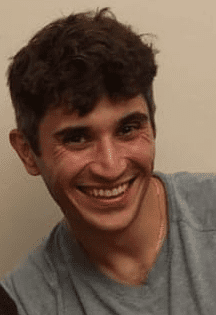Posted By: Kylee Spencer, PhD, Assistant Editor, AJHG
Each month, the editors of The American Journal of Human Genetics interview an author of a recently published paper. This month we check in with James (@jvt_master) to discuss his recent paper, “Autoimmune alleles at the major histocompatibility locus modify melanoma susceptibility”.

student in the Bioinformatics and Systems Biology Program at the University of California San Diego.
KS: What motivated you to start working on this project?
JT: The unresolved mystery of personal history. Alright, that’s unnecessarily cryptic, let me try again. Upon completing my undergraduate studies, I found myself the unwilling protagonist of a medical odyssey, one highlighted by indiscriminate immune attack and unexplained inflammation. Anomalous in the extreme, the disease, strongly believed to be autoimmune in nature, baffled physicians for years. Before a diagnosis could be made though, the condition, fortunately for me, dissipated on its own, vanishing as mysteriously as it arose.
This unexpected experience made me keenly aware of and intimately familiar with the enigmatic basis behind autoimmunity. Though autoimmune conditions are fundamentally complex diseases, one notable association seemed to continuously arise across these conditions: the HLA. Encoding the bridge upon which self-recognition is built (the MHC), it affords an avenue for the immune system to interact with self and detect and destroy cellular aberrations. If we conceptualize autoimmunity as a breakdown in self-tolerance, then the self-recognition bridge is critical to this failure.
Certain HLA alleles are known to tip the autoimmune scales so to speak, but increased disease predisposition without genetic advantage deviates from my overly idealistic world view. Might there be a counterbalance to this predisposition, a protective effect hidden in plain sight? If so, where might a predisposition for immune cross-reactivity confer an advantage? These are the questions by which I became entranced, the answers to which could provide meaning to my maddening medical mystery.
KS: What about this paper/project most excites you?
JT: Wait should I only pick one? Well, if you’re going to twist my arm, I would have to say our investigation into immune infiltration. That carriers of class I autoimmune HLA alleles exhibit not only increased CD8+ T-cell levels in primary melanoma tumors, but also reduced regulatory T-cell levels, was an extremely compelling finding and suggests an immune-mediated mechanism behind the observed melanoma protective effect. Moreover, it highlights an advantage for an anti-immunosuppressive predisposition, which I’m personally thrilled about.
I’d also be remiss if I didn’t at least mention how excited I am about the implications of our work and all the thrilling avenues to be investigated on the frontier of the autoimmune-cancer interplay.
KS: Thinking about the bigger picture, what implications do you see from this work for the larger human genetics community?
JT: Aha, implications! I see two key corridors for further exploration on the autoimmune-cancer frontier. The first pertains to the scope of class I autoimmune HLA alleles’ ability to modify cancer susceptibility broadly. In this study, we focused on the relationship between cutaneous melanoma, which is considered to be among the most immunogenic forms of cancer, and HLA alleles associated with skin-specific autoimmune conditions. Expanding this investigation to other cancer and tissue-specific autoimmune HLA allele pairs is a logical next step. One that has the potential to elucidate commonalities in methods of cancer protection and reveal similarities across protective alleles.
KS: What advice do you have for trainees/young scientists?
JT: Remember your why. Success in science is often the product of countless failures and frustrations which have a way of testing one’s mettle. Regularly reflecting on your motivation for solving scientific mysteries and the implications of your work can serve as a restorative lens to rescue your drive and to broaden your perspective, even when blinded by research-induced myopia.
On a lighter note, never be afraid to let your curiosity get the better of you or let your imagination run wild. I’ve found that the best ideas are inspired by exploring our interests, especially down paths that seem superficially tangential to your scientific journey. A journey I believe Tennyson (inadvertently) summarized best:
“We are not now that which in old days
Moved earth and heaven, that which we are, we are,
One equal temper of heroic hearts,
Made weak by time and fate, but strong in will
To strive, to seek, to find, and not to yield.”
KS: And for fun, tell us something about your life outside of the lab.
JT: Piano, poker, performing insane (or so I’ve been told) workouts, building and adapting state-of-the art deep learning models for inane tasks, and writing about some of the crazy characters I’ve had the pleasure of encountering over the years. These are just some of my innumerable, incongruous interests outside of research. I also enjoy making obscure references that endlessly exasperate my friends and family. In fact, it took all my willpower not to respond to this question with one. Now with that being said, I guess I can sign off with one: “Good question(s) Aguado!”
